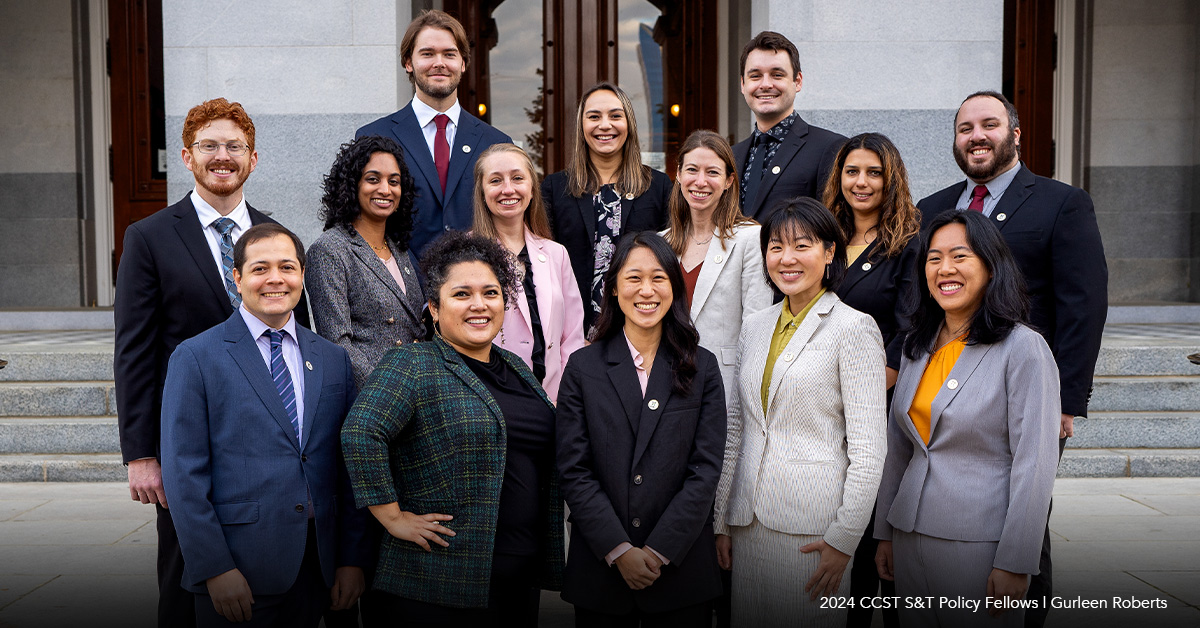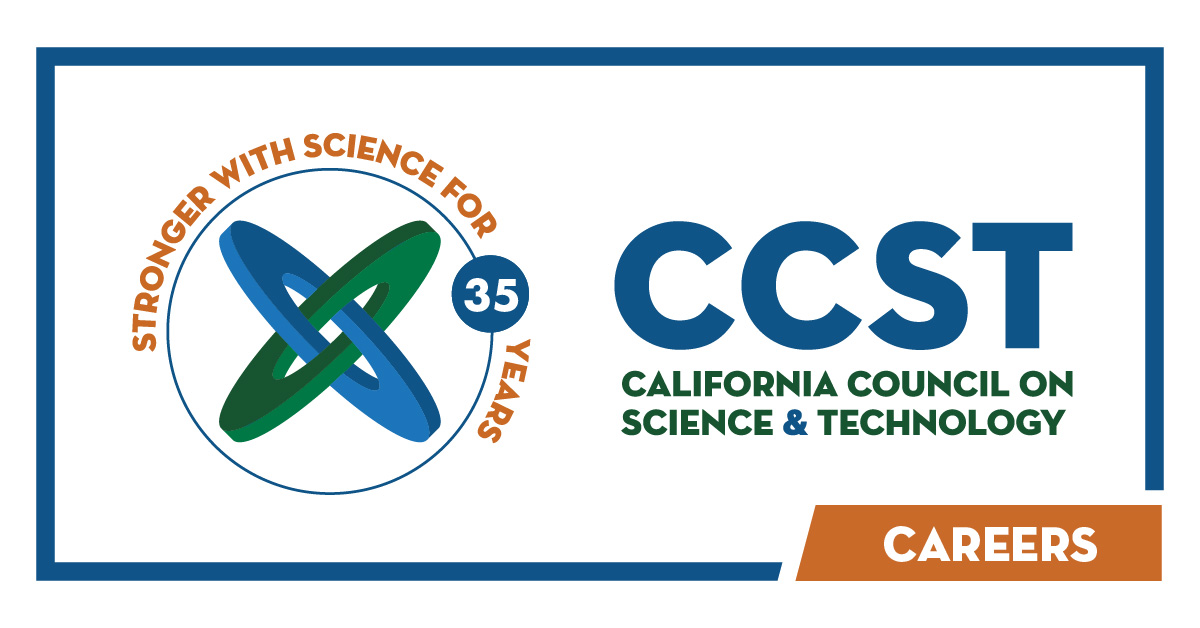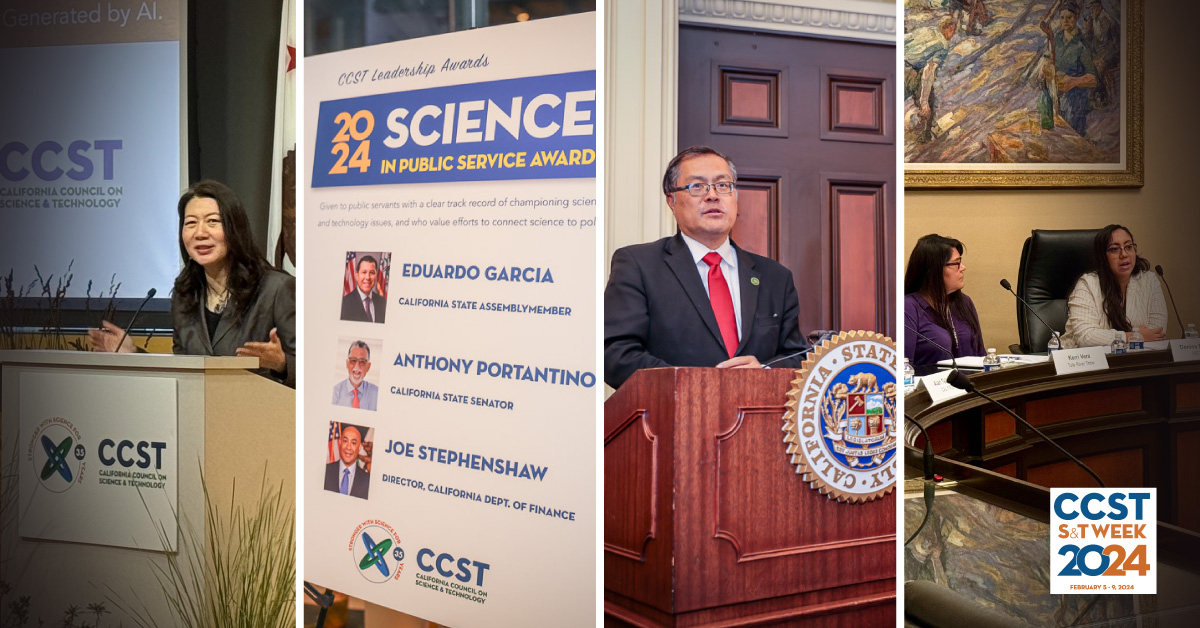K-6 Teachers and Classrooms Need Stronger Focus on Science
April 5, 2010 | CCST Newsroom, Press Releases | Contact: M. Daniel DeCillis
 California’s elementary school teachers feel much less confident in teaching science than reading or math, and there is both the need and the potential for significant improvement in elementary school teacher preparation, according to a new report by the California Council on Science and Technology (CCST).
California’s elementary school teachers feel much less confident in teaching science than reading or math, and there is both the need and the potential for significant improvement in elementary school teacher preparation, according to a new report by the California Council on Science and Technology (CCST).
Currently, 50% of California’s students score at or below basic proficiency in science, with only Mississippi having a higher percentage of students below basic proficiency. Little science is taught in the state’s elementary schools: in one recent survey, 80% of K-6 teachers reported spending 60 minutes or less per week on science; and 16% indicated they spend no time at all on science.
The Preparation of Elementary School Teachers to Teach Science in California: Challenges and Opportunities Impacting Teaching and Learning Science is an eighteen-month study funded by the S.D. Bechtel, Jr. Foundation. The report examines the state’s process for preparing elementary school teachers to teach science.
Unlike secondary school teachers, who hold credentials that prepare them specifically to teach science or math, K-6 teachers hold a multiple subject credential, designed to equip them to teach all subject areas, including science, in their classrooms.
To complete the new study, CCST worked with the California State University Center for Teacher Quality (CTQ), which has conducted annual surveys of first-year teachers and their Principals/supervisors since 2001. The CTQ data over eight years indicate that K-6 teachers rate themselves as substantially less prepared to teach science than mathematics or reading.
It is notable that the Principals/supervisors give more positive ratings to the teachers. In the 2008 survey data, the difference between new teacher and Principal/supervisor assessment reached 20%. The findings are consistent with other research indicating that elementary teachers have an initial and persistent lack of confidence about science instruction.
“The fact is that despite a general rise in student science proficiency scores, and considerable focus on science and math teacher preparation at the secondary level, elementary school teachers have not shown a rise in confidence over the course of the study, suggesting that significant work remains to be done,” said CCST Education Committee Chair Stephen Rockwood.
In addition to assessing the preparedness of elementary school teachers, the study also profiles nine teacher preparation programs identified by a working group of educational experts as having initiatives reflecting promising approaches to improving the preparation of elementary teachers to teach science.
The report includes five principal recommendations:
- Share and disseminate information on existing promising programs and infrastructure proactively, including convening of a “best practices” symposium
- Adapt existing statewide teacher preparation policies to enhance K-6 science teaching, including aligning community college lower division science instruction with teacher preparation programs
- Take a leadership role in the discussion of science standards nationally and remain proactively engaged in this discussion
- Follow the recommendations for building a statewide K-8 science reform coalition that were offered by participants during the “Building a Village” Convocation from April 2009 that was organized by the National Academy of Sciences and the National Academy of Engineering.
- Use new data to guide policy and systematically collect such data from across California’s teacher preparation programs.
The report is available here.
The California State University (CSU) System, the single largest teacher preparation system in the state, has increased its preparation of secondary science and mathematics teachers by more than 85% in the past five years. It is responding to the report with several initiatives that address its recommendations. It is planning a meeting on best practices in teacher preparation that will include an elementary science teacher preparation symposium. Its campuses are developing new Foundational Level General Science credential programs that include community college pathways. It will make available tools used by the Center for Teacher Quality to facilitate other institutions’ collecting and using data on the preparation of elementary teachers in science.
“Top leaders on this campus and across the CSU are committed to addressing this problem,” said Warren Baker, President of Cal Poly, San Luis Obispo, and co-chair of the national Business Higher Education Forum initiative, Securing America’s Leadership in Science, Technology, Engineering and Mathematics (STEM). In a statement on behalf of the CSU system and five CSU Presidents who have followed the work of the CCST closely and all strongly support its recommendations, he said “We have a deep shared concern about these issues, and a number of exemplary programs have been or are being developed on CSU campuses that we can build upon to help ensure elementary teachers across California are well-prepared in science.”
The work of the five campuses reflects examples of the approaches that are being taken across the CSU system. One example is development of a new K-8 Foundational Level General Science credential and certificate at CSU East Bay. A second, at CSU Fullerton, includes integration of kit-based science resources in developing high level expertise in science among K-6 teachers, and also features a range of internship experiences in informal science institutions.
A third example, at CSU Los Angeles, includes a collaborative initiative with the David and Lucile Packard Foundation involving ten CSU campuses. On each, future elementary teachers will engage with elementary children in active, hands-on science in after-school programs.
A fourth example involves elementary teacher pathways in liberal studies and child development at Humboldt State. Future elementary teachers will learn inquiry-based science methods and practice them in museum settings. Another example, at Cal Poly San Luis Obispo, includes early field experiences in inquiry-based science at local elementary schools. It is part of a recently awarded federal Teacher Quality Partnership grant with CSU Bakersfield and Monterey Bay.






